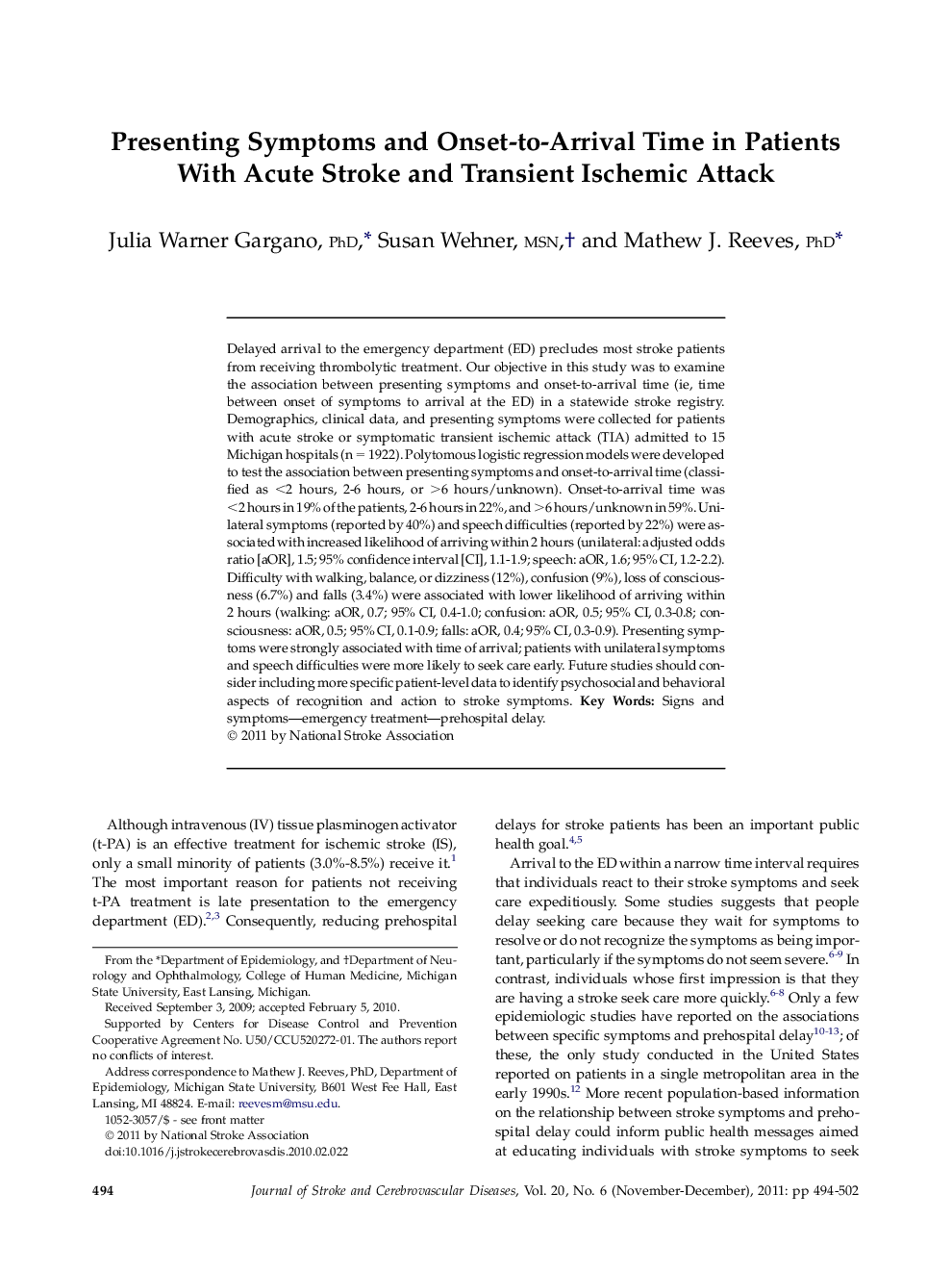| Article ID | Journal | Published Year | Pages | File Type |
|---|---|---|---|---|
| 2706566 | Journal of Stroke and Cerebrovascular Diseases | 2011 | 9 Pages |
Delayed arrival to the emergency department (ED) precludes most stroke patients from receiving thrombolytic treatment. Our objective in this study was to examine the association between presenting symptoms and onset-to-arrival time (ie, time between onset of symptoms to arrival at the ED) in a statewide stroke registry. Demographics, clinical data, and presenting symptoms were collected for patients with acute stroke or symptomatic transient ischemic attack (TIA) admitted to 15 Michigan hospitals (n = 1922). Polytomous logistic regression models were developed to test the association between presenting symptoms and onset-to-arrival time (classified as <2 hours, 2-6 hours, or >6 hours/unknown). Onset-to-arrival time was <2 hours in 19% of the patients, 2-6 hours in 22%, and >6 hours/unknown in 59%. Unilateral symptoms (reported by 40%) and speech difficulties (reported by 22%) were associated with increased likelihood of arriving within 2 hours (unilateral: adjusted odds ratio [aOR], 1.5; 95% confidence interval [CI], 1.1-1.9; speech: aOR, 1.6; 95% CI, 1.2-2.2). Difficulty with walking, balance, or dizziness (12%), confusion (9%), loss of consciousness (6.7%) and falls (3.4%) were associated with lower likelihood of arriving within 2 hours (walking: aOR, 0.7; 95% CI, 0.4-1.0; confusion: aOR, 0.5; 95% CI, 0.3-0.8; consciousness: aOR, 0.5; 95% CI, 0.1-0.9; falls: aOR, 0.4; 95% CI, 0.3-0.9). Presenting symptoms were strongly associated with time of arrival; patients with unilateral symptoms and speech difficulties were more likely to seek care early. Future studies should consider including more specific patient-level data to identify psychosocial and behavioral aspects of recognition and action to stroke symptoms.
